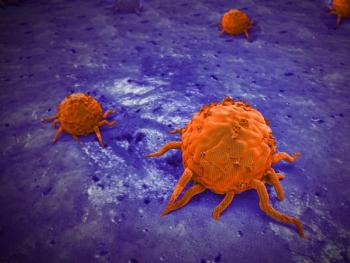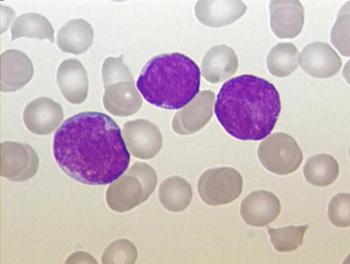
CLL Responds to Induction With RCC Regimen Plus Rituximab Maintenance
CLL patients responded well to induction with the RCC regimen cladribine, cyclophosphamide, and rituximab followed by maintenance rituximab.
There was a high rate of response among patients with previously untreated chronic lymphocytic leukemia (CLL) who underwent induction treatment with the renal cell carcinoma (RCC) regimen cladribine, cyclophosphamide, and rituximab followed by maintenance with rituximab compared with maintenance observation alone, results of the PALG-CLL4 trial show.
“The PALG CLL4 (ML21283) trial is the first study to assess the effectiveness of induction therapy based on an RCC regimen and maintenance therapy with rituximab in patients with CLL,” Tadeusz Robak, MD, PhD, of Copernicus Memorial Hospital, Lodz, Poland, and colleagues wrote in their study,
All patients in the trial underwent induction treatment with six cycles of cladribine, cyclophosphamide, and rituximab. Patients who achieved complete or partial response were then randomly assigned to maintenance with rituximab or an observational arm. The intention-to-treat population included 97 patients who completed induction therapy. Of these, 73.2% had a response, including 22.7% with a complete response.
A total of 66 patients were randomized to maintenance therapy or observation. Half of patients in the observational group achieved complete response, compared with 57.1% in the maintenance therapy arm. Patients assigned to rituximab maintenance had a significantly longer progression-free survival compared with observation (P = .028).
The researchers noted that a higher rate of complete response after maintenance and observation was unexpected and might “be a question of low number of patients in both randomized arms.”
Among patients who achieved complete or partial response, the minimum residual disease negative rate 8 weeks after the last rituximab dose as part of induction was 15.4%. By 12 weeks after the end of maintenance therapy or observation, the minimum residual disease negative rates were 20% and 28.6%, respectively.
A multivariable analysis showed that maintenance treatment with rituximab significantly decreased the risk for disease progression compared with observation (hazard ratio = 0.60; P < .0001). In addition, there was a significantly higher risk for progression in patients with del17p (P = .006) and elevated beta-2 microglobulin (P = .015). In contrast, CD38-positive patients had a significantly decreased risk for progression (P = .013).
The safety analysis included data from 124 patients. The majority of adverse events occurred during the induction phase. Overall, 76 adverse events were serious; 42.1% occurred in the induction phase, 18.4% in the rituximab maintenance arm, and 39.5% in the observation arm. There were 19 deaths, one of which occurred in the maintenance arm.
Newsletter
Stay up to date on recent advances in the multidisciplinary approach to cancer.





















































































